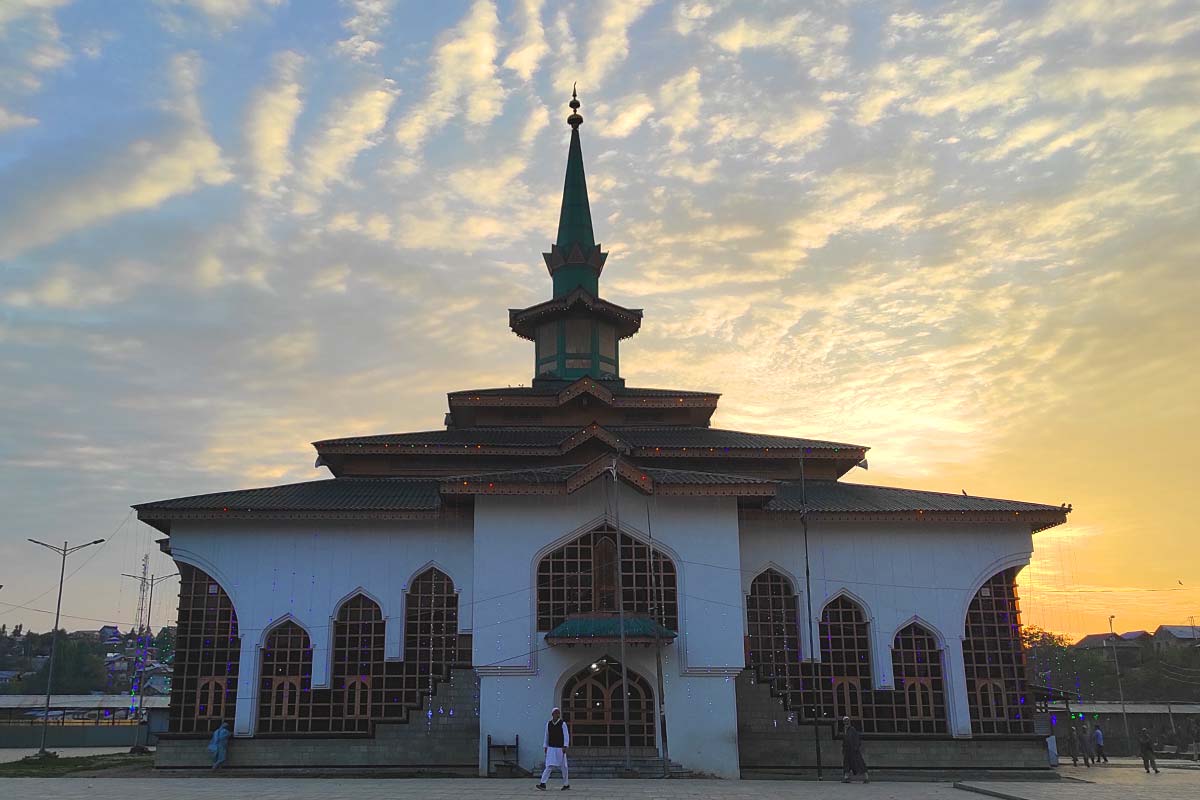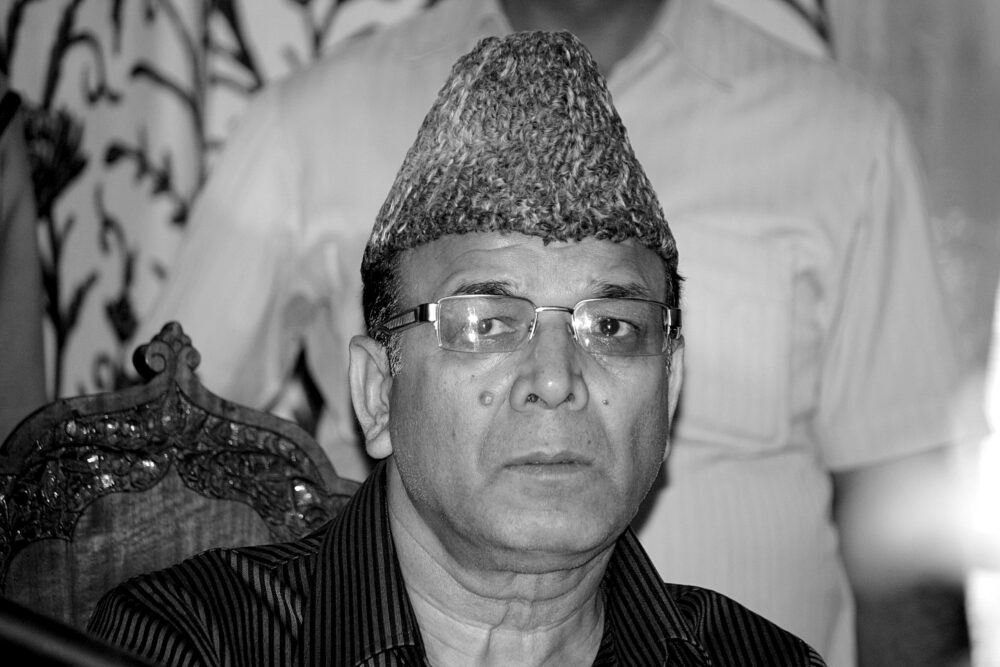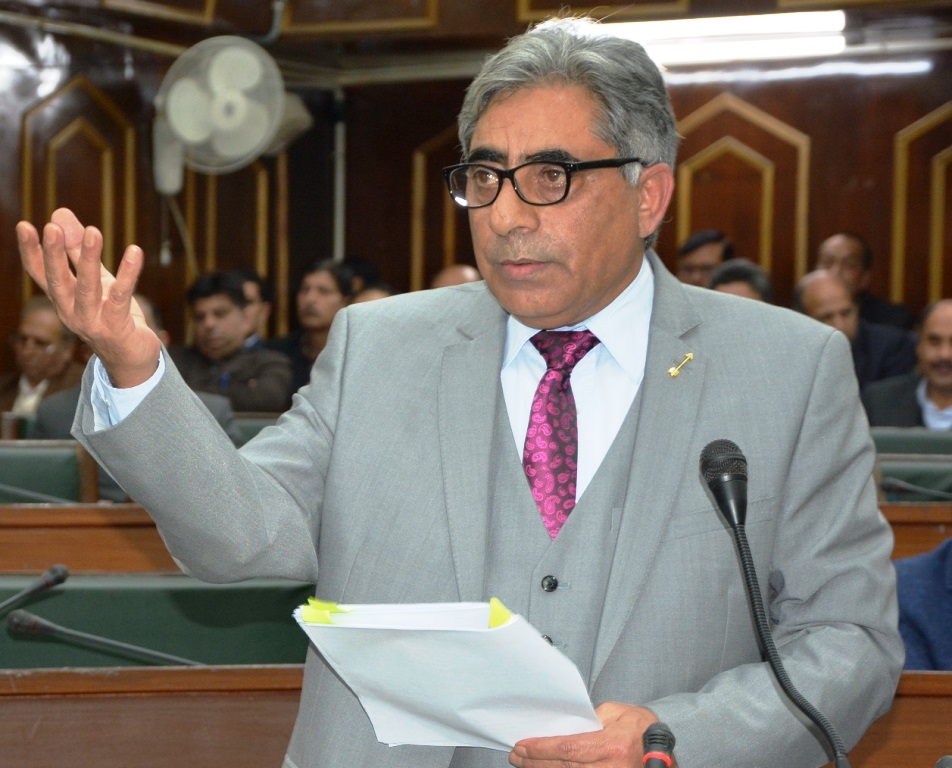After a decade-long hiatus, the Charar-i-Sharief constituency in Budgam district is set to witness a fiercely contested assembly election, reports Farooz Ahmad Lone
Charar-i-Sharief constituency, revered for its association with the venerated saint Sheikh ul Aalam, is a pivotal electoral belt in Budgam. Historically, the JKNC dominated this constituency until the PDP’s victory in 2014.
A decade has passed since the last assembly election in 2014. The Supreme Court intervened, setting a deadline for polls.
Political Landscape
The election process has reignited rivalry between JKPDP’s Ghulam Nabi Hanjura supporters and JKNC’s Abdul Rahim Rather, the main contenders. There are 10 candidates in the contest but the main contenders are Rather and Hanjura. However, Peoples Democratic Front (PDF) chairperson Hakim Yaseen is also a candidate to reckon with. He is contesting from Charar-e-Sharief as well as Khan Sahab, a constituency he represented earlier.
Locals predict a close contest between JKNC’s and JKPDP’s candidates. Rather is tipped to win the seat for a record seventh time. A very influential person Rather has been Jammu and Kashmir’s finance minister for six terms.
This segment’s politics has been dominated by JKNC throughout, especially by Rather since 1957. In 1967 and 1972, Indian National Congress’s Abdul Qayoom won the seat, and in 2014, JKPDP’s Ghulam Nabi Hanjura defeated Abdul Rahim Rather, ending his 35-year reign.
In the 2014 assembly election, Hanjura won with a margin of 5,167 votes, securing 64,600 valid votes (82.44 per cent of 78,359 total voters). The male-female voter split was 40,322 to 36,726. He secured 32,849 votes, accounting for 50.85 per cent of the total votes cast. Abdul Rahim Rather stood as runner-up with 27,862 votes, representing 42.85 per cent of the total votes.

The remaining candidates failed to surpass a 2 per cent share of the total votes. Zahid Hussain of INC, now a member of BJP, ranked third with a mere 922 votes (1.47 per cent). Additionally, 122 postal votes were cast in the constituency.
In the 2008 election, JKNC’s Rather emerged victorious with 24,579 votes, defeating JKPDP’s Hanjura by a margin of 6,375 votes. Hanjura secured second place with 18,204 votes, accounting for 35.78 per cent of the total votes. The constituency had 68,229 voters, comprising 35,368 males and 32,861 females. The total votes polled were 50,883 (78.58 per cent).
The constituency’s early elections saw Abdul Rashid Bakshi of Jammu and Kashmir National Conference win in 1957 and 1962. Indian National Congress’ Abdul Qayoom succeeded him, winning in 1967 and 1972. JKNC’s Rather then dominated the seat, winning consecutively from 1977 to 2008, until his defeat in 2014 ended his 35-year reign.
Geography
Charar-i-Sharief constituency lies approximately an hour and a quarter from Srinagar, nestled among tourist destinations such as Yousmarg, Pakherpora, and Bargha. It is situated at an elevation of over 6,340 feet above sea level. It is in the south and southeast of Budgam district, central to the Jammu and Kashmir region.

The constituency, spanning 59 sq km, is 32 km from Srinagar. It encompasses both rural and urban areas, including the main town of Charar-i-Sharief and surrounding villages. An uninhabited forest block is also part of the constituency.
Following the 2022 delimitation, the Charar-i-Sharief constituency now comprises Charar-i-Sharief Tehsil in its entirety, as well as the Driygam Panchayat Constituency of Khansahib Tehsil, Ichkoot and Gudsathoo Panchayat Constituencies of Budgam Tehsil, and parts of Chadoora Tehsil, excluding specific Panchayat Constituencies and the Municipal Committee Chadoora.
Demography
Charar-i-Sharief town boasts a diverse population living in harmony, with a total of 11,533 residents, according to the 2011 census. The town’s demographics comprise various castes, communities, sects, and religions.
Males account for 5,904, while females make up 5,629. Children aged 0-6 constitute 14.20 per cent of the population, with 880 males and 758 females. The sex ratio stands at 953 per thousand males, surpassing the UT’s average of 889.

The town’s literacy rate is 65.66 per cent, slightly lower than Jammu and Kashmir’s average of 67.16 per cent. Male literacy rates reach 75.30 per cent, while female literacy rates stand at 55.72 per cent.
The population is predominantly Muslim, with over 99 per cent adhering to Islam. Sunni Muslims comprise 95 per cent, while Shia Muslims make up the remaining 5 per cent. Other religious groups include Hindus and Sikhs.
According to the Jammu and Kashmir chief electoral officer’s website, the constituency has 103,000 voters, the second-highest in Budgam district. Males account for 52,288, and females for 50,832. Senior citizens aged 85 or above number 747, with 332 males and 415 females. Notably, six voters are identified as transgender.
The constituency is served by 127 polling stations, with 15 allocated to urban areas and 112 to rural areas.
Economy
In the Charar-i-Sharief constituency, traditional practices and local resources underpin economic life. Horticulture is the mainstay, with the region’s favourable climate ideal for growing various fruits, including apples, pears, and plums. Orchards are ubiquitous, and the fruits harvested here drive regional trade.
Agriculture also plays a significant role. The fertile soils of Charar-i-Sharief and Pakherpora support a range of crops, with residents primarily cultivating wheat and vegetables for subsistence and local markets. Generations of farmers tend to the rolling fields, forming the backbone of the area’s agricultural output.
The art of handicrafts, deeply rooted in Kashmiri culture, thrives in the area. Skilled artisans produce exquisite carpets and shawls, displaying intricate designs and high-quality craftsmanship. These handicrafts, renowned for their beauty and artisanry, reach both domestic and international markets, blending economic activity with cultural heritage. The Kangiri of Charar-i-Sharief is also famous throughout Kashmir, made in the main town and peripheral villages.
Tourism is gaining traction in the Charar-i-Sharief constituency. Visitors are drawn to Charar-i-Sharief’s historical and religious significance, exploring its rich heritage and spiritual ambience. This growing interest adds a layer to the local economy.
Local markets and small businesses, such as retail shops, are vital to the economic fabric of these communities. They provide essential goods and services to residents and visitors, contributing to the area’s economic vitality and reflecting its dynamic local culture.
Challenges
The constituency faces numerous challenges. Unemployment, a significant national issue, is particularly pronounced in Charar-i-Sharief. The lack of industry in the area means that educated individuals have limited opportunities for employment and career advancement. The absence of a private sector exacerbates this issue, leading to a surge in unemployment.
Poor infrastructure is another challenge. While road improvements are underway, many main and link roads remain un-macadamized. The constituency’s infrastructure is comparatively poor, and new projects are needed. Public transport is the primary mode of transportation, with buses, private vehicles, and shared taxis available, albeit limited in rural areas. Passengers often wait hours for transportation.
Education facilities are limited. Although primary to graduate-level education is available, access to higher education is not. Students must travel to Srinagar to pursue master’s-level education. The quality of education in government-controlled schools is poor compared to private institutions, as evidenced by the results.
The region has basic healthcare facilities, including primary health centres and smaller clinics. However, patients must travel to Srinagar, Budgam, or Pulwama for specialized treatments and medical examinations. Government-run hospitals, particularly in rural areas, face shortages of doctors and medical supplies.


